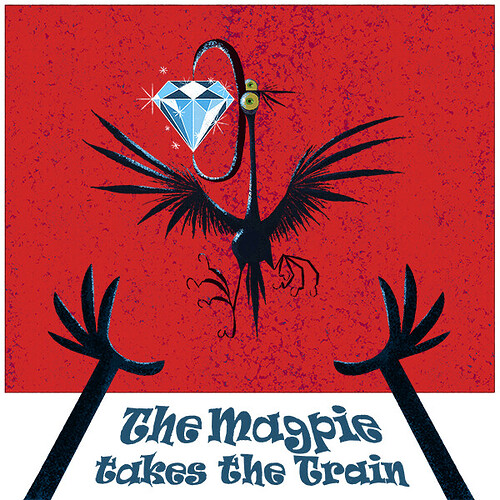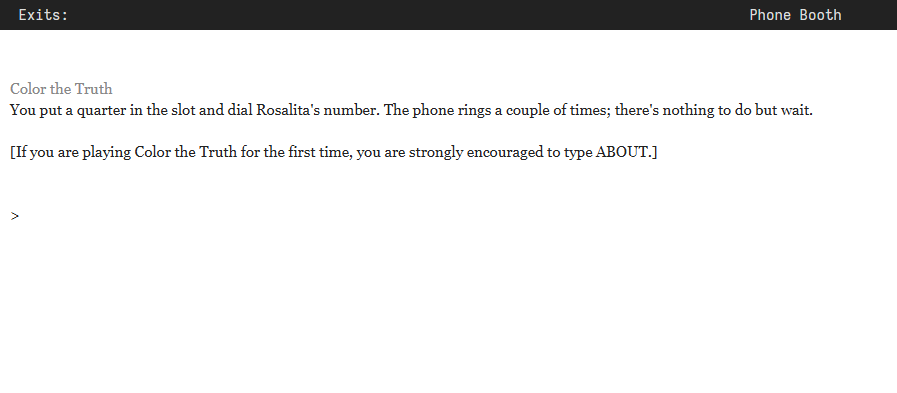Oh that’s great! Thanks for letting me know!
Sherlock Indomitable
This one was fun and simple to replay. I love Sherlock Holmes, and after Color the Truth, people suggested I make more murder mysteries with the clue system it has. I thought it would be natural to adapt Sherlock Holmes games to the same system!
It turned out to be really hard. I wrote a series of essays about that challenge, which now is part of my recently released IF History book. The main issue is that a written work is by its nature linear, and IF is not. If I add a lot of deviations to the plot, then I have to both devise writing (which will inevitably be compared to Doyle’s) and new plot and activities. When the original author is involved, like in Hithchiker’s Guide to the Galaxy, it can work out well. In my case, I ended up making the game very linear, and for things not part of the main story I combed through the collected works of Doyle to find quotes that were similar. For instance, at the beginning of the game, when Watson approaches Sherlock, their depressing quotes are straight from later Holmes stories.
This game adapts two Holmes stories, with a framing narrative. I made it this way to win Introcomp; basically, most Introcomp entries are either tiny openings to choice-based games or unfinished parser games. My idea was to make a modular game and enter one complete, polished module (in this case, the Case of the Speckled Band). Then, to finish the game and fulfill Introcomp’s prize requirements, I added another module of the same size: The Case of the Six Napoleons.
This is another one I’ve long regarded as a failure, but looking back, people have treated it well, with the main complaints being linearity and an overabundance of mechanics. It was taught once in university in Jim Loughlin’s course, which was nice.
I did originally preserve the story of The Speckled Band, but a review from Emily Short alerted me that that story included racist depictions of Romani people. I didn’t even know who Romani people really were or that the common name used for them is a slur, so I was horrified. I quickly modified the game to change them to stonemasons who are speckled with mortar.
Overall, I don’t really see a good way to ‘fix’ this game. It fulfills its purpose, it’s just that that purpose isn’t as fun as many other purposes.
I also have an easter egg here for Sam Ashwell, one of the winners of the Best Reviewer competition for the previous IFComp. The XYZZY text takes you to a room where he’s a Moriarty-type villain.
Ether
Wow, this one was really eye-opening! (I didn’t intend this as a pun but I guess if you look at the climax of the game it is…)
I went back and read some earlier things I’ve written on this game. This was the first game I ever published. But it’s not the first game I ever made! My first game was a small toy game designed to learn Inform, about Abraham and Isaac. It was called Simple Things. I posted it on the forum, but I felt embarrased by my first feedback (which I recall as negative but may not have been). So I changed my forum name to be anonymous (something I now realize is a recurring pattern) and made Ether.
Ether was my attempt at doing something no one had done before. I was, by this time, already the top IF reviewer on IFDB, with 200 reviews. I had noticed that games with vertical movement tended to be hard to play (outside of the fun Threediopolis). So I wanted to ‘solve 3d movement’ by making a game centered around it.
You play as a god-like being shaped like a Nautilus (a kind of tentacled creature with a shell). Throughout your history, you have used magic to hop from world to world. The world you are currently in is a study in contrasts, with one direction being hot, another cold; one dense, one light; one chaotic, one peaceful.
Movement is in 3d, so new commands like NEU (i.e. north, east, up) were added. Gameplay revolves around chasing after moving objects, moving them to new areas, and gaining new abilities.
I had a blast replaying it now. I had looked back on it as a weaker work, and felt like I developed more as a writer since then, but for my personal tastes I really enjoyed what old me wrote.
And I got a lot of positive feedback, both in testing and reviews. Sean Shore was my star tester; he had won IFComp the previous year and gave me amazing feedback on my game that made it much more solid. He would later go on to test many of my other games, and when I made Never Gives Up Her Dead, he was one of two people I kept in mind as my audience.
Unfortunately, I got into IF writing because work was going bad. In the academic world, I was getting rejected over and over on a paper I wrote due to it being poorly written, according to reviewers. And the one school I had hoped to teach at my whole life and who told me I would probably get hired there rejected me. So I was hypersensitive to negative feedback on writing from authority figures.
Emily Short reviewed my game and said something (I purposely didn’t look it up so I could record my impression) about how the emotional climax of the game didn’t feel earned. I didn’t realize at the time that people simply have different tastes, and I also had trouble telling what made writing good or bad, so I took this to mean that emotion in my games was bad and I should strip it out to be a better writer. I took this path for years, and it wasn’t until 2019 when I worked with a writing ‘coach’ at my work that I got over the mental idea. Nothing in her review told me to do that, but I really shied away from expressing any emotion after that.
But on replaying it now, I see it was just fine. Some people like sentimental stuff, and some don’t, and the specific story in the game is one that I think resonates with me, and several other reviewers said they liked it.
Its bigger issue imo is how linear it is. There are some puzzles but you mostly just walk into things and then carry them to extreme corners. So I feel like it could have had a bit more satisfying interactions, and the paragraph structure could be modified a bit as well and some repeating messages modified.
Unfortunately, I don’t have a copy of the most current source code, which is version 2. For most other games I have an old backup of all their code, but not for Ether. So I won’t be updating it, but it felt really rewarding to play after years of thinking it was an example of poor writing only to personally enjoy it (especially since I had forgotten much of it). I also liked the poems I included; I really love boxed quotations but didn’t use them since Glulx displays them weird, so I think maybe I’ll try making a Z-code game that has them.
After writing the above thoughts, I went back and saw the original review, which said, “I found Ether least effective when it explicitly went for pathos in the writing, because it was asking me to empathize with a rather abstract being that I mostly hadn’t envisioned as capable of having feelings to start with, and it hadn’t put in the time to build up that empathy. Similarly, the ending reached for an emotional point that it hadn’t done the work to earn, at least for me.”
I should have realized that this contained both fact and opinion, since I think Emily Short did as well; she included a ‘guest post’ on her forum by Lucian Smith, who liked the game quite a bit more. So, I appreciate that!
Finally, I originally used a wikipedia image for the cover art, but I later used an IFComp prize to commission a twitter artist to make new art for me (years later).

















